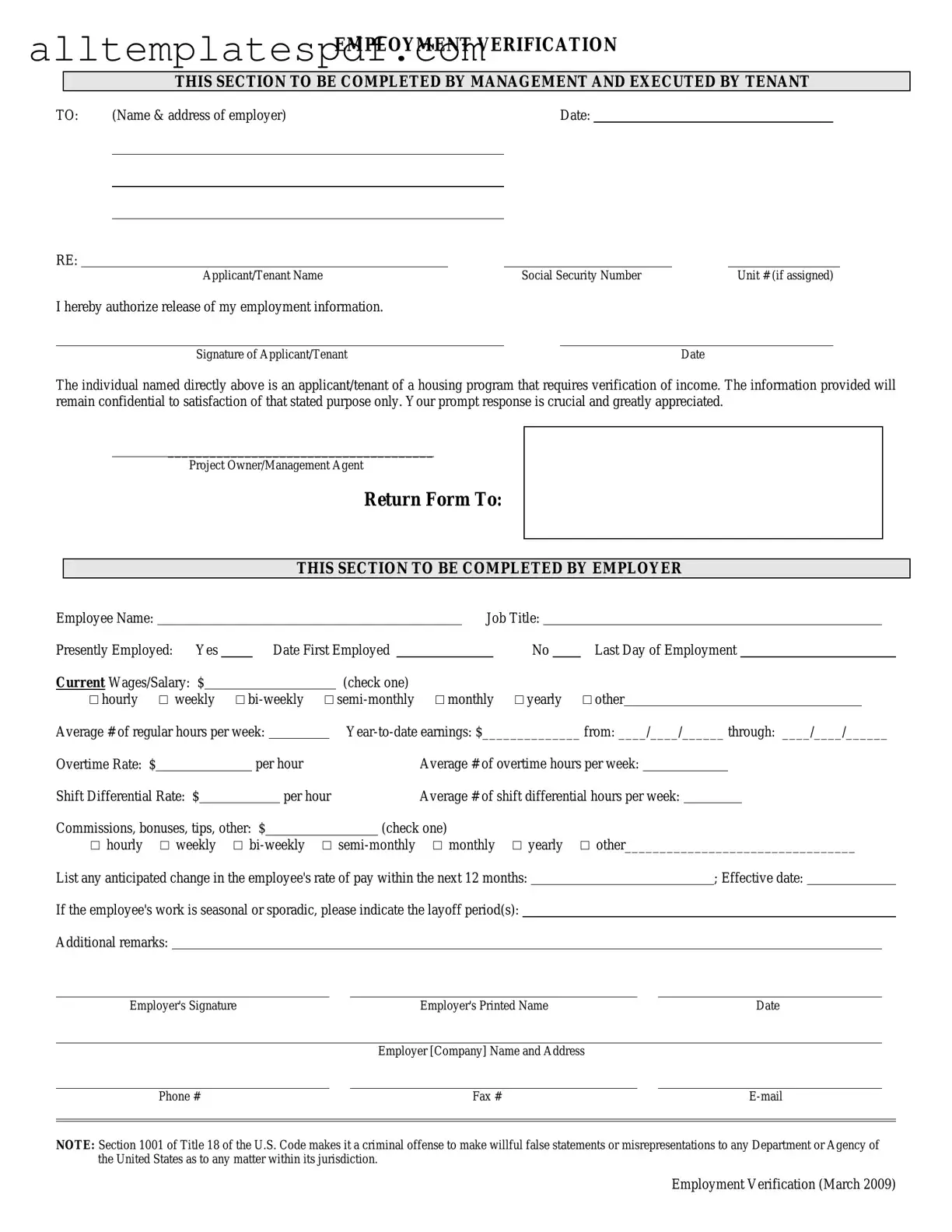Filling out an Employment Verification Form can be straightforward, but many individuals make common mistakes that can lead to delays or complications. One frequent error is providing incorrect or outdated information about employment dates. It is essential to verify the start and end dates of employment before submission. An inaccurate date can raise questions and potentially jeopardize the verification process.
Another common mistake is failing to include the correct employer contact information. Providing an outdated phone number or email address can hinder the verification process. It is crucial to ensure that the contact details are current and accurate, allowing the verifier to reach the employer without issues.
Many people overlook the importance of signing the form. A signature is often required to validate the information provided. Without a signature, the form may be considered incomplete, leading to unnecessary delays. Always double-check to ensure that the form is signed before submission.
Inaccurate job titles can also create confusion. Individuals may use informal titles or abbreviations that do not match the official job title used by the employer. This discrepancy can complicate the verification process. It is advisable to use the official title as listed in company records.
Another mistake involves providing insufficient details about job responsibilities. A vague description can lead to misunderstandings about the nature of the employment. It is beneficial to provide a clear and concise overview of the job duties to give the verifier a complete picture.
Some people forget to disclose gaps in employment. Transparency is key when filling out the form. If there are periods of unemployment, it is better to address them directly rather than leave them unexplained. This honesty can help build trust with the verifier.
Additionally, individuals may neglect to review the entire form for accuracy before submission. Typos or errors in information can lead to complications. Taking the time to proofread ensures that all information is correct and complete, reducing the chances of delays.
Lastly, not following the specific instructions provided with the Employment Verification Form can lead to mistakes. Each form may have unique requirements. It is important to read and adhere to all instructions carefully to ensure a smooth verification process.
